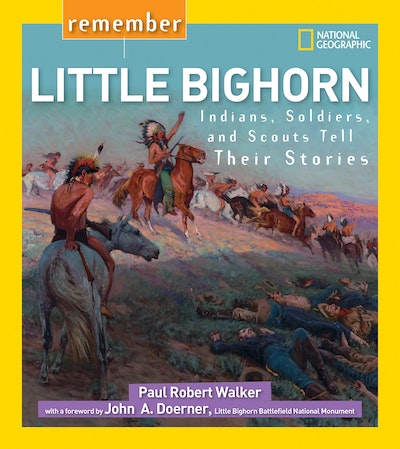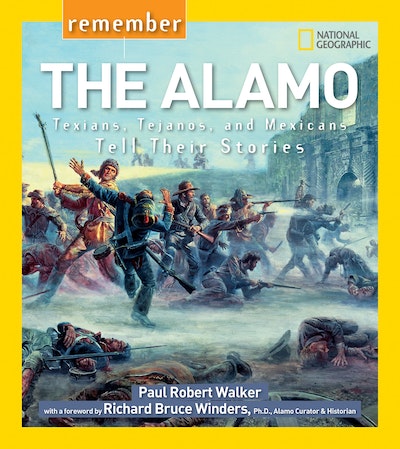Remember Little Bighorn, maintains the momentum of this award-winning National Geographic series, which continues to set new standards in nonfiction history books for middle-grade students.
Author Paul Robert Walker draws on scores of eyewitness accounts of the Battle of the Little Bighorn from Indians, soldiers, and scouts, measuring their testimony against the archaeological evidence to separate fact from fiction. From this wide kaleidoscope of testimony, the author focuses his narrative into an objective and balanced account of one of the most contentious chapters of American history.
Covering the core curriculum topics of Westward Expansion and the Indian Wars, Walker's text is a vivid and timely historical narrative to mark the 130th anniversary of the Battle of the Little Bighorn in June 2006.
Readers first learn about events preceding the fighting, including the discovery of gold on Indian land in the Black Hills, the refusal by Sitting Bull, Crazy Horse, and other Indian leaders to obey a government order to live on the Great Sioux Reservation, and the subsequent battle in Rosebud Valley. The narrative evolves to the three major clashes known collectively as the Battle of the Little Bighorn: the attack by Major Reno on Sitting Bull's village, the "Custer Massacre" in which Crazy Horse and more than a thousand warriors wipe out George Armstrong Custer and his immediate command, and the final battle on Reno Hill, which culminates in the victorious Sioux and Cheyenne setting fire to the grass and moving up the river.
The afterword explains how the greatest Indian victory only hastened their final defeat, as news of Custer's fate enflamed public opinion and led Congress to give control of all Sioux agencies to the Army. Readers learn how Sioux rations were cut off until native claims to the Black Hills and Montana hunting grounds were renounced.
In the finest National Geographic tradition, the book illuminates this controversial period in American history with extensive use of primary sources. Some 50 archival images are included, several by Native Americans, plus a map showing troop and Indian movement. Remember Little Bighorn also features a comprehensive time line of Indian Wars, web sites, student-friendly resources, and a quick-reference index that make it an ideal source for writing reports.
National Geographic supports K-12 educators with ELA Common Core Resources.
Visit www.natgeoed.org/commoncore for more information.


